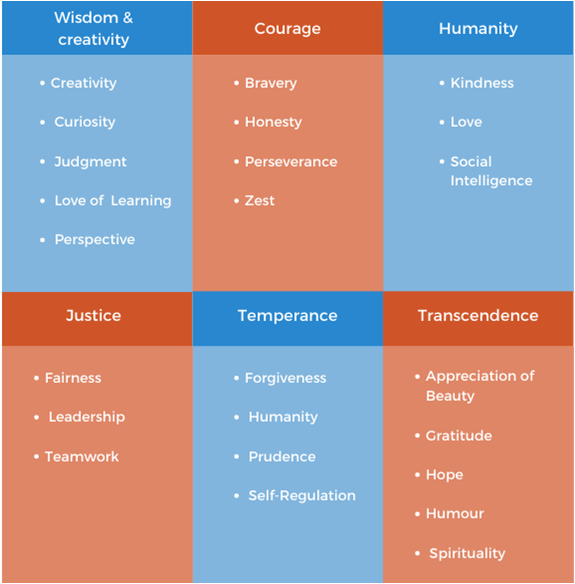Positive Psychology: Harnessing the Good and Right in People

A century-old debate within the organisational sciences revolves around one deceptively simple question: “Is management synonymous with leadership?”
The scholarly study of management traces its foundations back to the publication of Fredrick Taylor’s Principles of Scientific Management in 1911. The study of leadership has a comparatively recent history, with theories on effective leadership emerging around the 1940s and 1950s.
Management and leadership overlap, of course. A manager’s role revolves around planning, organising, commanding and coordinating organisational processes. An effective manager ensures efficient operations and output with the terminal goal of delivering value to the organisation and its stakeholders.
Leadership, in contrast, is a process of social influence. Effective leaders serve as catalysts of change, amplifying organisational members’ efforts, talents, and abilities. One can also influence without having any formally assigned role or title, so we can have managers who are not leaders. Likewise, we can too, have leaders who are not effective managers. The difference between management and leadership is further accentuated in how each approaches performance evaluation and the development of organisational talent.
Traditional approaches to performance appraisal rely on quantifying organisational employees’ ability to meet certain goals and targets. Employee performance is assessed in terms of grades, ranks and ‘critical incident methods’ – the latter consisting of reports of events in which the employee explicitly displayed behaviours indicative of commendable or unsatisfactory work performance.
Contemporary approaches to performance evaluation may include the use of 360-degree feedback and Management by Objectives (MBO). These approaches, however, share at least two common characteristics. First, they are direct extensions from an industrial-era management paradigm, directed toward profit-maximisation and loss minimisation. Criticising the MBO approach, psychologist Harry Levinson refers to the practice as ‘really just industrial engineering with a new name’ and that this approach ‘perpetuates and intensifies hostility, resentment, and distrust between manager and subordinates.’
Why yes, fellow music lover, this IS a Pink Floyd reference
Second, many of these approaches focus heavily on compliance and adherence. Poor performance is rectified; deviances reprimanded. Performance, seen through the eyes of the impartial scientist-manager, is judged by checklists on which employee contributions and abilities help attain organisational goals. Even by today’s standards, performance evaluation hasn’t deviated too much from Taylor’s approaches to management. The role of the manager in evaluating performance can be summarised simply as quantifying compliance.
But surely, there must be a better way to develop talent within organisations. One might argue that complying to policies and standards is not performance per se, but adherence or obedience to organisational expectations. Compliance does not necessarily translate to growth, development, or improvement. It probably will not be long before even star performers within the department or organisation decide on “what’s next” after having met targets and goals set for them.
We may become more skilled and efficient the more we learn on the job – but real psychological growth and emotional fulfilment from our jobs cannot stem solely from meeting the organisation’s goals alone. To grow talent, we not only need to (or simply just rely on) managing employees. We need to lead such talent – in this case, lead them to their best possible selves.
If you were to reflect on leader figures that had the most influence on you – role models and inspirational figures you saw as embodying ideals you wished for yourself, who comes to mind?
It will probably not be the micro-managing, authoritarian manager you worked for (or in this case, put up with) in your previous company. Nor the strict disciplinary teacher that everyone in your school was fearful of. It would be someone who exemplifies strengths, talents, virtues and personal qualities you wish you had yourself.
Management asks employees:
What can you do better and what can we do to improve you?
Leadership asks:
What are you already good at and how can we leverage that?
Leadership, in the context of talent retention and growth, is more compassionate than it is calculative; it is more qualitative and art, than it is quantitative and science.
Leadership is not magnetic personality, that can just as well be a glib tongue. It is not “making friends and influencing people”, that is flattery. Leadership is lifting a person’s vision to higher sights, the raising of a person’s performance to a higher standard, the building of a personality beyond its normal limitations.
Peter F. Drucker, Management: Tasks, Responsibilities, Practices
Asking a Different Question about Talent Selection and Management
Traditional approaches to talent selection, retention and development tests for worker knowledge, skills, abilities and, on occasion, psychological aspects such as their personality. Within the domain of personality testing, for instance, organisations look for prospective employees with certain patterns of thoughts, emotional tendencies and behaviours that they project as having a good ‘fit’ with the job and the organisation’s culture.
But the role of career development and management has changed dramatically over the past two decades; the nature of work and responsibility for career development today rests in the hands of employees themselves. In contrast with the traditional career, we now have Protean careers– careers “in which the person, not the organisation, is in charge, the core values are freedom and growth, and the main success criteria are subjective (e.g. psychological success) rather than objective (e.g. position or salary)”.
Crucially, this all seems to suggest that organsiations are hiring for fit and compliance to roles and culture. Nothing new there, until you consider the fact that organisations too, expect that the employees be (mostly) personally responsible for their career growth and development.
Organisations and key individuals within these organisations can and should correct this imbalance. The consequences of hiring, but not providing the fertile grounds and environment for talent growth and development can be damaging to the organisation, not least of all in any attempts to be perceived as a preferred employer.
The financial repercussions of losing talent, by some estimates, place employee turnover costs at about six to nine months’ salary on average. These costs are also not just monetary – losing talented, skilled employees incurs additional costs in terms of productivity, motivation and those involved in the re-hiring and training of a new hire.
Efforts towards talent selection and retention need to ask a slightly different tone, by focusing more on potential hires’ and current employees’ strengths and virtues. This is not a call to replace or overlook the need for upskilling or training. Rather, it is a call to ask a different question: “What is right with the people we currently have and wish to join us?”
And positive psychology has some answers to this. In contrast to ‘classical’ facets of personality – introversion-extroversion/neuroticism-emotional stability, locus of control or even the much-maligned MBTI typology (that still sees continued use in some organisations today), positive psychology focuses on a strengths-based approach, detailing the positive qualities and characteristics that individuals bring to the professional workplace. And when we identify, value, and leverage on their unique strengths and virtues of existing talent, they can flourish in their current organisational roles.
Talents and Strengths – What is Right with You?
Indeed, the question “What is right with people?” was what guided psychologist Donald Clifton’s development of a strengths-based classification of human personality. Strengths are tendencies for feeling, thinking and behaving in a manner that allows for optimal functioning in pursuit of valued outcomes – a positive perspective that adds to the mostly value-free and neutral judgments of classic personality traits. Clifton argued that these strengths are innate talents that can be nurtured and channeled towards meaningful outcomes. Talent in this regard is the ‘raw material’ for healthy psychological development and successful life experiences.
Clifton’s work, the CliftonStrengths, identifies a cluster of four different talents. You may be someone who has an innate talent and strength in thinking strategically, or someone with strengths in sequencing and executing projects. Or you might recognise a colleague as someone who has an innate strength in influencing others. You might reflect on how your immediate supervisor is someone with a strong emphasis on teamwork – someone able to build strong, cohesive relationships and a sense of collegiality and camaraderie between team members.
See yourself possessing any of these strengths and talents? When was the last time someone paid you a compliment or highlighted these skills in you? When was the last time someone said to you, during a job interview or performance appraisal, “Here’s what’s right with you; here’s what I think your strengths and talents are.”
We often think of strengths in terms of things we need to work on. But our strengths can also come from simply who we are. Maybe it’s time we stopped thinking of strengths solely as things we need to acquire or build, and more towards what we are innately already good at.
Source: https://www.gallup.com/cliftonstrengths/en/253715/34-cliftonstrengths-themes.aspx
From this point of view, to avoid your strengths and to focus on your weaknesses isn’t a sign of diligent humility. It is almost irresponsible. By contrast, the most responsible, the most challenging, and, in the sense of being true to yourself, the most honourable thing to do is face up to the strength potential inherent in your talents and then find ways to realise it.
Donald Clifton, Now, Discover Your Strengths
Virtues – What is Good in You?
Another classification of positive individual qualities comes from the work of psychologists Christopher Peterson and Martin Seligman. Like the CliftonStrengths typology, Peterson and Seligman wanted to create a universal language for systematically classifying strengths. Unlike Clifton, however, they were guided by a slightly different question, “How can one define the concepts of ‘strength’ and ‘highest potential’?
To build their classification, the two psychologists searched a broad range of literary works, identifying from myth, folklore, and historical accounts of qualities that they deemed exemplary of human peak capabilities and potential. The result is a classification of 24 strengths categorised into 6 virtues.
In contrast with innate abilities or talents, this classification – the Values in Action (VIA) typology, emphasises innate character goodness. The VIA classification answers the question of what good resides in each of us; applications of this classification providing some suggestions on how our signature virtues can help guide us toward a life of authenticity and meaning.
Rarely, if, ever, are we asked to self-reflect, let alone identify and state what our most unique virtues are. If you were to recall your role models – heroes (real or imagined), they would possess and display certain virtues that make them appealing to us.
Heroic figures may exemplify virtues such as courage and justice – a strong moral compass guiding their actions and their struggles for a greater good, even at a cost to themselves. We may draw inspiration from inventors and scientists who change the world thanks to their wisdom and creativity. We feel a sense of hope and form optimistic projections of what the future may hold for our children, thanks to the works of environmental conservationists and humanitarian activists. And there is a quiet strength to the leaders around us with no title – those who influence without raising their voices; those who remain humble and modest despite their accomplishments.
And we seek – though only sometimes realise, from religious and spiritual teachers that a meaningful life transcends our petty, daily concerns. Human virtues are evident wherever we look – across countries, culture time, gender, and of course, profession. We just need to make an effort to pay attention to and be mindful of them. To start you off, here is the VIA’s list of 24-character strengths, aligned with the 6 virtue categories. See yourself in any one of them? You can take the free test to assess your character strengths here.
Start with yourself – what virtues do you hold as a reflection of who you are? Which ones define you as a person and as an individual? In leading and growing talent, which ones do you see prominently in your employees? Ultimately, do you know your virtues and strengths before advising professional development and growth in another?
Organisations today have a wide range of tools and measures for which to assess talent – for selection, retention and further development. But perhaps what is still lacking is the realisation that complying to standards and meeting targets is just one metric for performance.
To select talent is to first recognise the messy, challenging, but deeply revealing nature of who we are as unique individuals. To retain and grow talent is to recognise that employees have strengths, talents and virtues that are uniquely their own – and that these need to be accepted, respected, and ultimately, rewarded.
See Also: We Have Ditched Formal Performance Conversations. What Now?
Leaderonomics.com is an advertisement free website. Your continuous support and trust in us allows us to curate, deliver and upkeep the maintenance of our website. When you support us, you allow millions to continue reading for free on our website. Will you give today? Click here to support us.
Business
Dr Eugene YJ Tee is presently Professor at the Department of Psychology, HELP University. He holds a PhD in Management from the University of Queensland and a Master's of Applied Positive Psychology from the University of Pennsylvania. He is the author of four books – “Of Bromances and Biting Cute Babies”, and “Mindfulness and Emotions,” "The Science of Feelings" and "The Tyranny of Speed". Eugene is also a Mindfulness-Based Strength Practice Certified Practitioner and a Reflected Best Self Exercise (RBSE) Certified Facilitator. He divides his time teaching at the university and engaging with the general public in his science communication efforts, focusing on emotional intelligence and positive psychology.





